
The Madison County Historical Society is a local historical institution with a large collection of documents, photographs, three-dimensional objects, and other records related to the history of Madison County, Illinois. The Archival Library, one branch of the institution, is located within a one-story brick building next to the historic Weir House, a two-and-a-half story Federal-style home which has been used as the museum gallery since 1964. The Weir House and MCHS’s galleries have been closed to the public since early 2020 for renovations. This loss of gallery space prompted MCHS staff, most notably Jenn VanBibber, to set up a temporary exhibit space inside a conference room in the Archive for a series of rotating exhibits related to Madison County History.
I visited this “Mini-Museum” on June 16, 2022. I was already at the MCHS Archival Library on this day completing work for my Museum Studies internship, so I decided to review Jenn’s current selection of exhibits inside the gallery – which, should be noted, is physically separated from Jenn’s office only by a 5-foot-tall temporary cubicle wall. (A great idea, in my opinion, due to the transportability, size, and ability of the wall to have lightweight panels or documents mounted to it.) Jenn VanBibber wears many hats in MCHS, but she is usually ascribed the title of curator. She also contributes a lot of work on the registrarial side, as well as overseeing my internship at MCHS this summer.
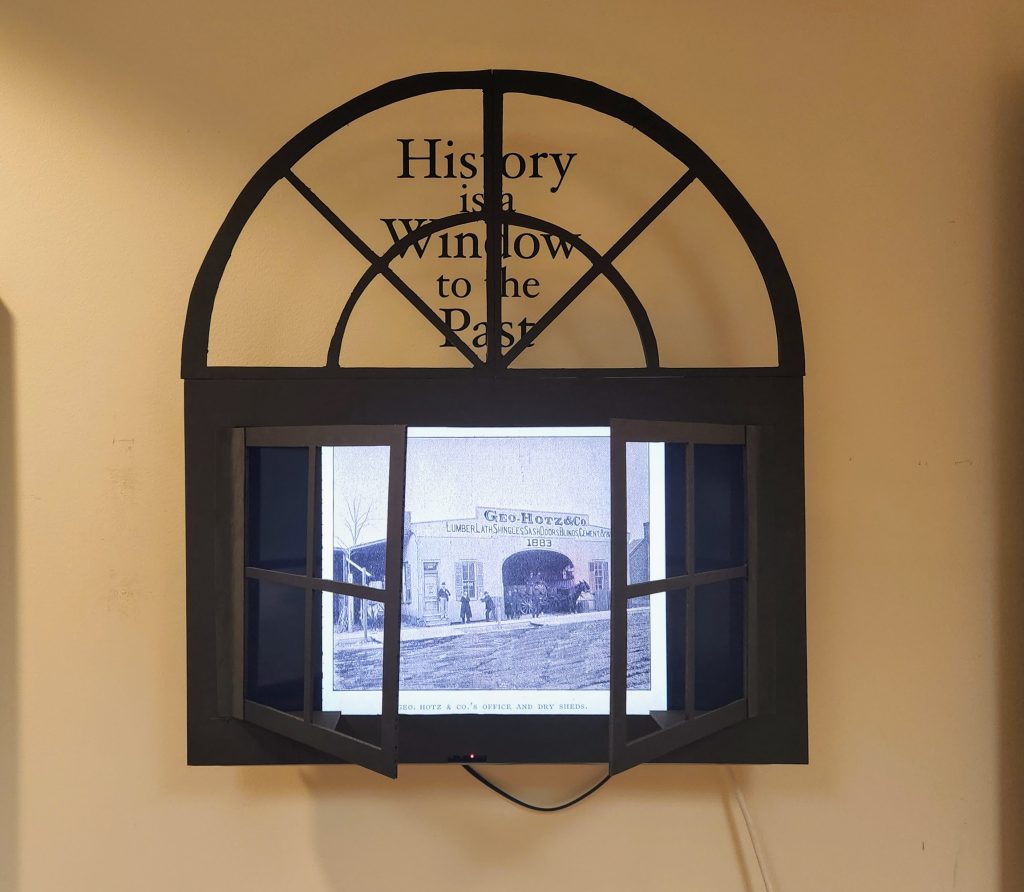
The Mini-Museum’s big idea centers around the construction of a shallow, wide survey of Madison County history from ancient times to present. Because the nature of the exhibit is rotational, the overarching idea remains broad, allowing for pieces of the exhibit to be switched out. This big-picture view allows the curator to present many different types of artifacts within the same space; it also provides the visitor with a quick outline of Madison County history, rather than going in-depth on one topic. Audience demographics can vary, but based on both my analysis of the exhibit’s foci and my time spent at the Archive, visitors seem to be limited to those who are already at MCHS for other business (volunteering, an internship, scholarly research, an event) or those seeking a specific artifact on display. As the Library’s hours are extremely limited (9a-4p Wednesday-Friday, and 1p-4p Sundays), scholarly research likely happens within those times or by appointment, severely limiting the time spent on anything besides one’s research – including the Mini-Museum.
The exhibit is contained within approximately half of the Library’s conference room. Rectangular in shape, the exhibit has only one entrance/exit, allowing for a somewhat self-directed viewing experience. Entering the space from the back left, one is first confronted with a flat case to the left and a free-standing set of panels to the right.
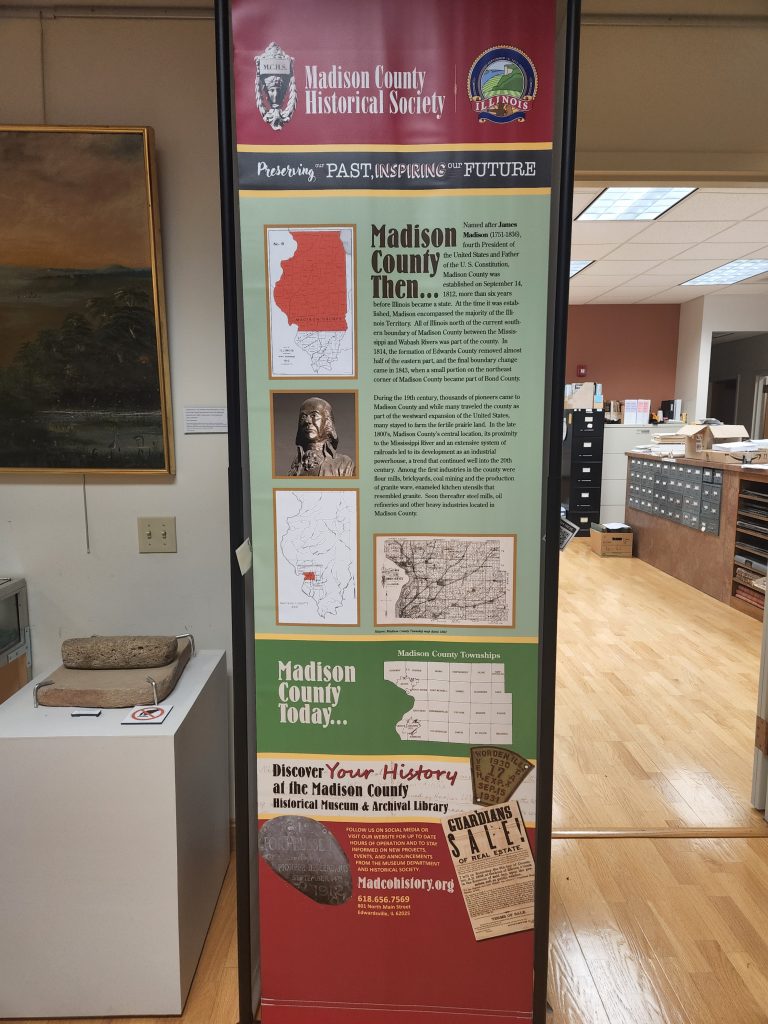
I decided to head through counter-clockwise, leading me to the ‘Spirit of Sport: Winter Edition’ mini-exhibit first. Along the left wall were cases containing several pairs of ice skates, a 1928 Hibbard Gliger sled, and pages of relevant archival documents. One of these flat cases has a metal placard designating it as property of The Bank of Edwardsville (now Busey Bank). Mounted on the wall above the flat cases are five panels of various sizes – two 8-11” panels for each flat case, and a larger pentagonal panel in the center for general information.
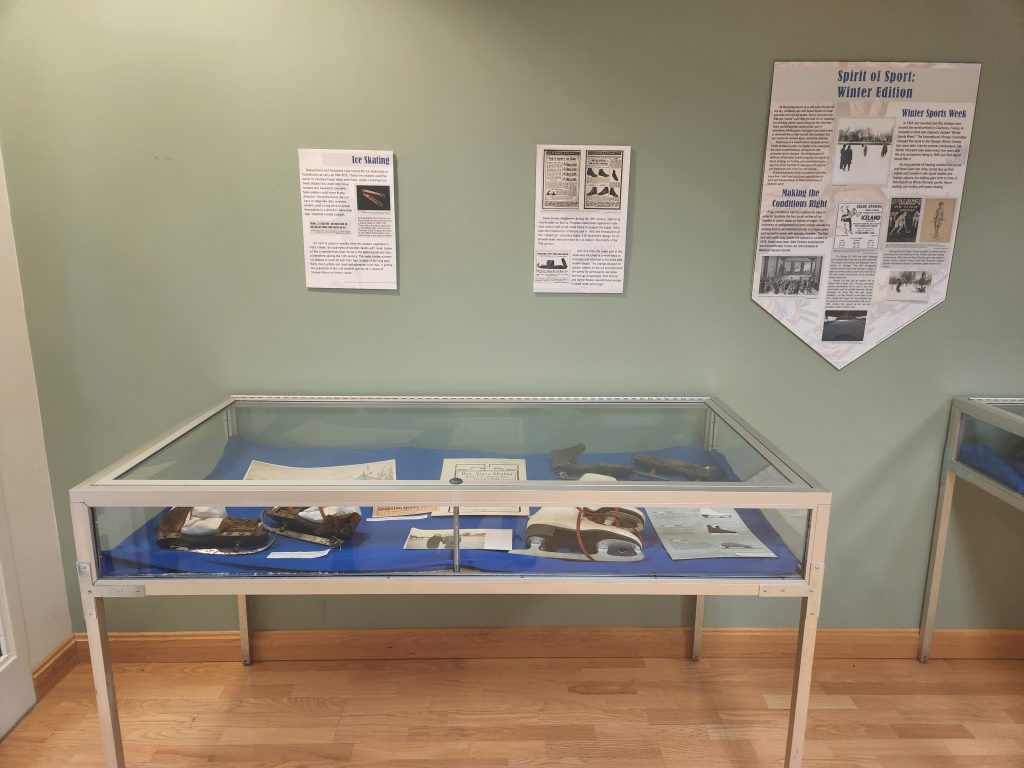
An additional pedestal with vitrine was dedicated to an 1890 toboggan used in Alton by, allegedly, the Lemp family and friends. In this exhibit, object labels are often typed on the same page as the supplemental information, which is often from outside sources. Sometimes, labels would be more traditionally formatted and placed, like the one from the 1890 toboggan below.
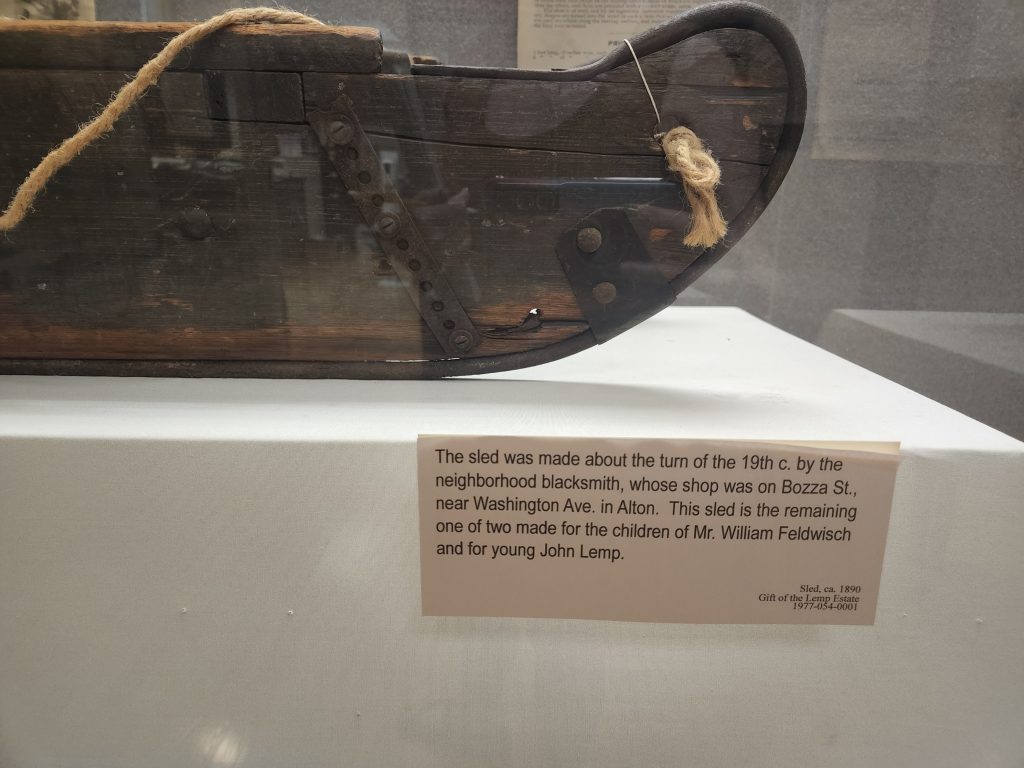
Past the Winter Sports exhibit was a collection of document copies and artifacts related to Robert Wadlow, including his very large shoe in a vitrine on a tablecloth-clad pedestal. A life-size print cutout of Wadlow stands next to an oversized wooden ruler, allowing guests to, literally, measure up to the local giant.
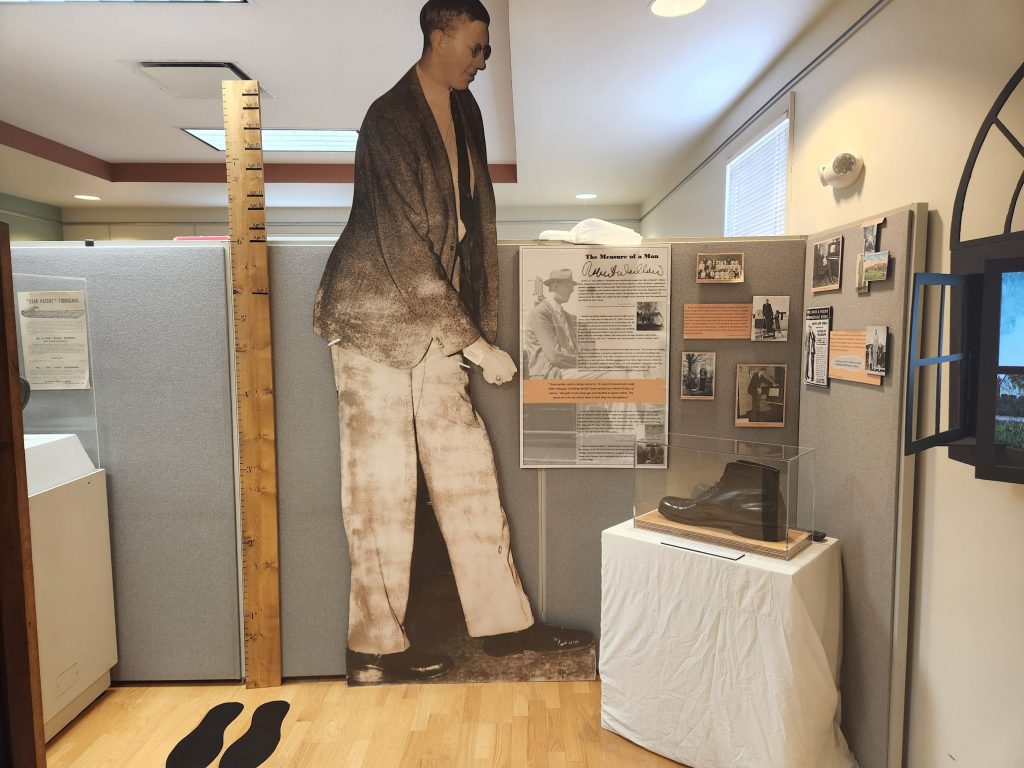
Following Wadlow’s section, a television mounted within a shadow box constructed as a window further engages visitors to stop and interact as they watch the slideshow of images through the window panes.
Next, a large mounted plat map of Madison County is hung, interestingly, over a closed and blind-covered window. Although the plat is clearly constructed from facsimile panels, I do wonder what the over-window placement might do in terms of exposure to the elements; perhaps too much moisture, or light exposure, or any other environmental factor might affect a more unstable object.
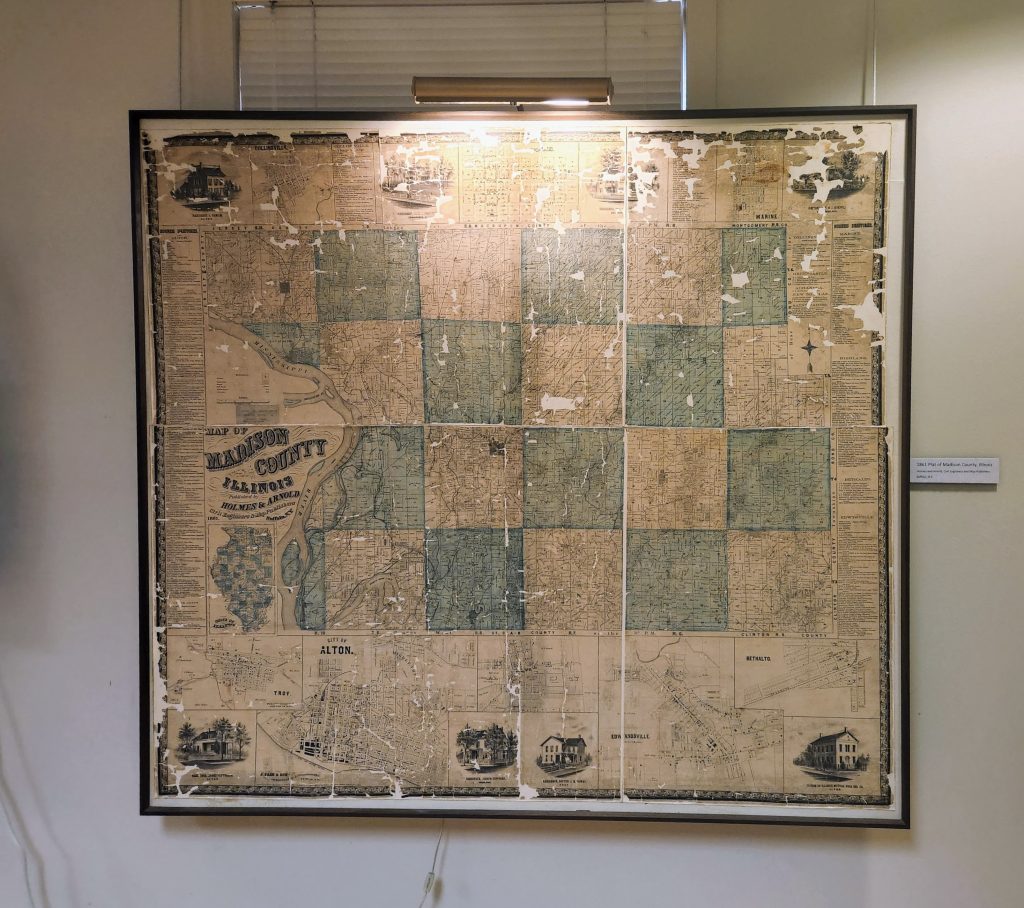
The next section of the exhibit pays homage to the ‘first farmers’ of Madison County, the Mississippian peoples of Cahokia. Another flat case is filled with some lithics, including a mortar and pestle set as well as several chert tools. At the center, several terracotta saucers hold (modern) examples of seeds which were farmed by the Mississippians in this area. One chert hoe was attached via leather straps to a replica handle, which was labeled as such inside the case.
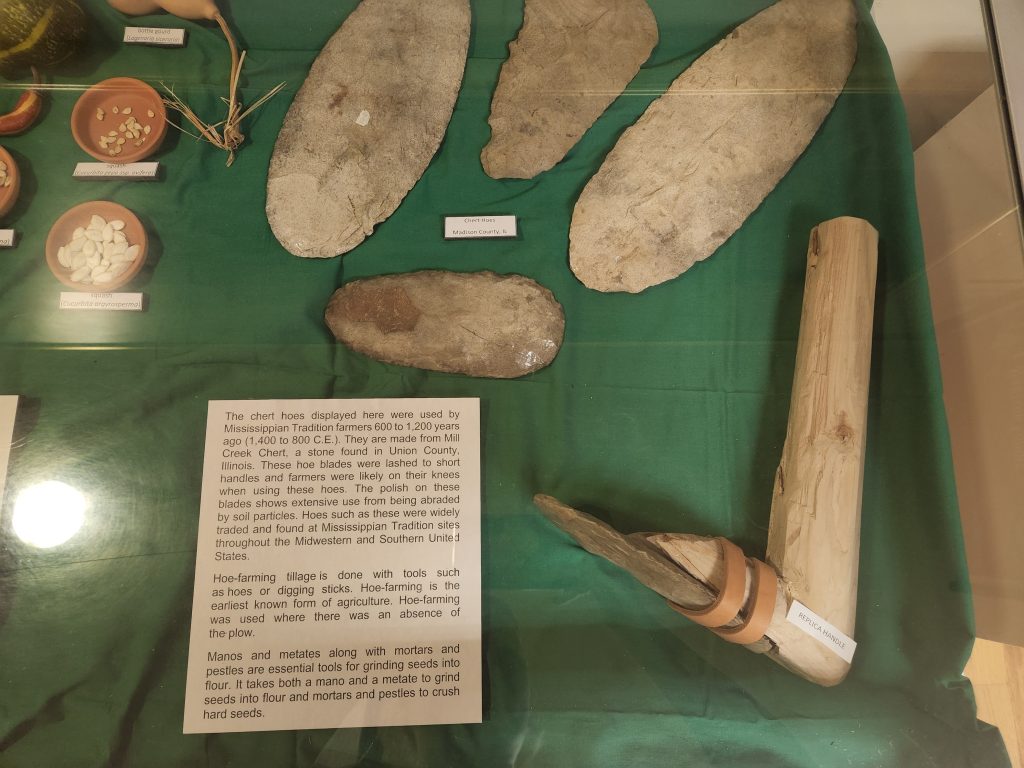
To the immediate right of the case was a pedestal, sans vitrine, displaying a metate and mano set. A large “Do Not Touch” sign was adhered to the top of the pedestal near the descriptive label.
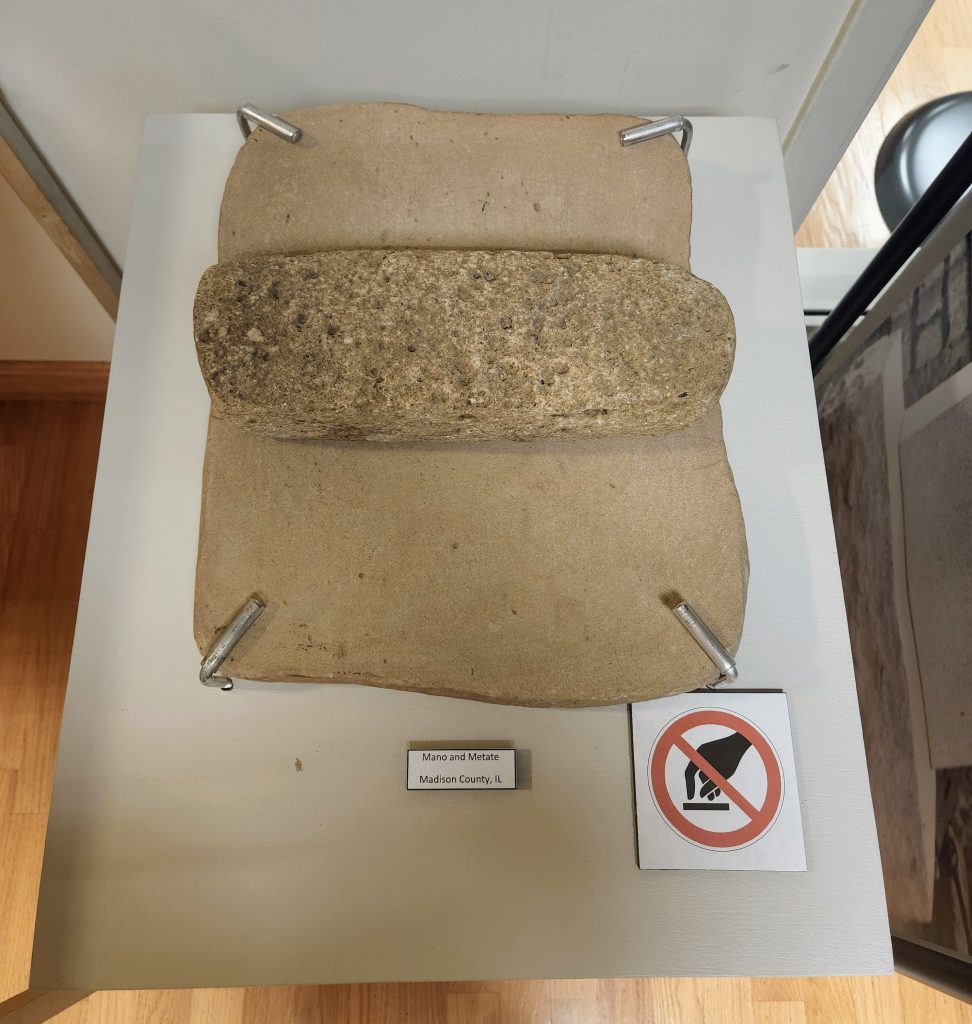
Above the “First Farmers” case hangs a very large oil painting. This “primitive style” landscape seems to depict the American Bottoms, with St. Louis – in its infancy – shown in the background of the several Cahokian mounds and pioneer-style settlers and their gear. Found in the attic of the Weir House in the ‘60s, the provenance of this painting is unknown (a fact gleaned from the very descriptive label mounted to the right of the painting).
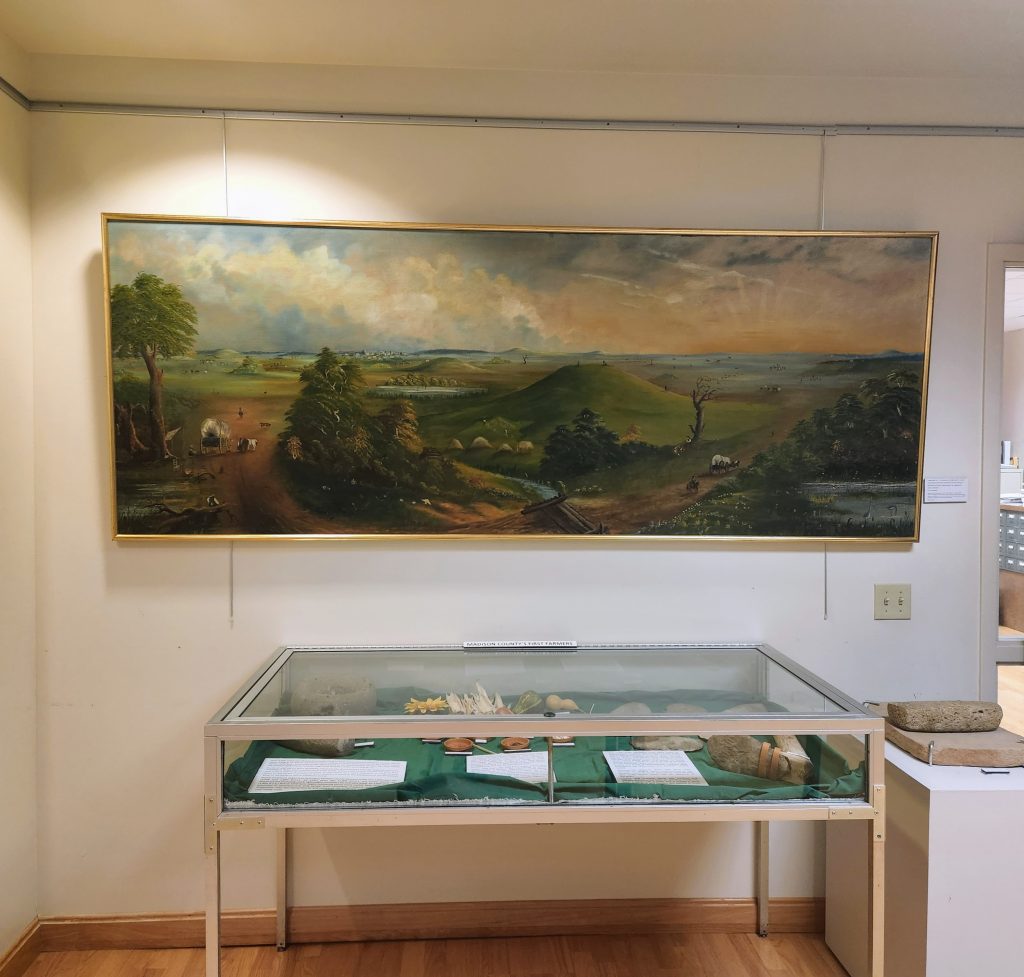
Finally, a free-standing tri-fold board is placed in the center of the room. This set of panels is organized to describe the several treaties between the U.S. government (state, federal, and local) and local Native American tribes. These panels exhibited copies of historical treaty documents and maps which were contextually illustrated by relatively long, descriptive labels.
The two critiques I have for this collection of mini-exhibits are both focused on the temporary nature of the exhibit. The Robert Wadlow section was the most fleshed out, and would be a good exhibition for a visitor without much local or institutional knowledge, as it tracks Wadlow’s life in the county from beginning to end. The Winter Sports exhibit had the best panels, although the out-of-season theme and lack of more permanent and complete labels made this section feel the most temporary and overlooked. Here, very interesting objects from MCHS holdings were displayed in such a manner so that it felt, somehow, less interesting – as a museum studies student, the outside sources (advertisements, patent documents) placed within the cases stood out to me as a lack of supporting information related to the specific objects themselves, though it would have made good background information for a panel.
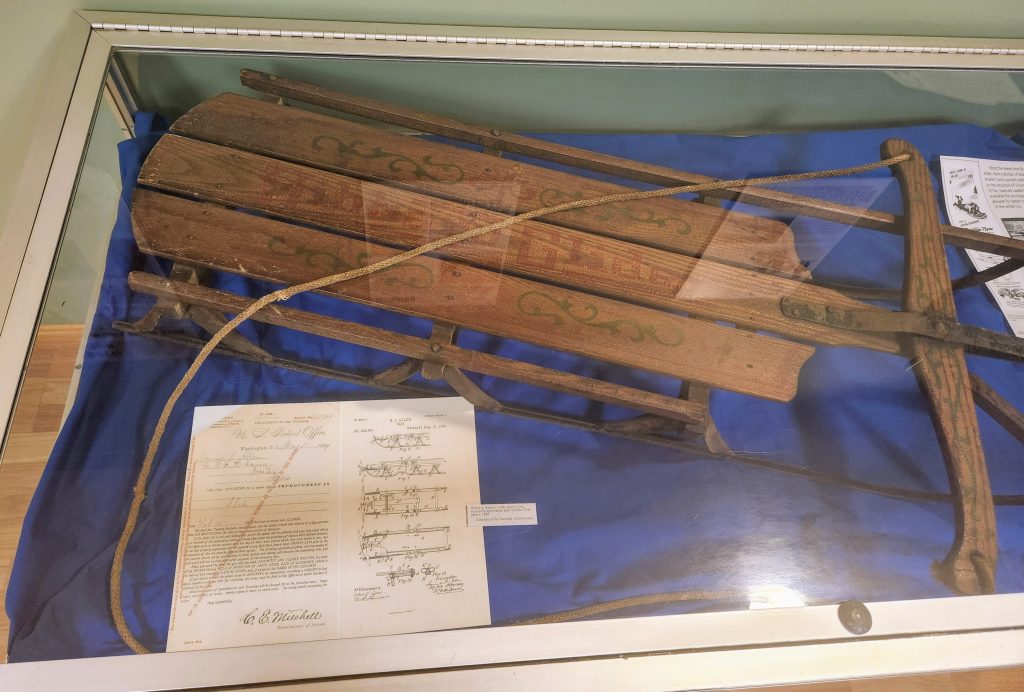
In summary, the MCHS “Mini-Museum” is a good overview of Madison County history for an audience with some basic knowledge of the area. As a local, I felt that I was already familiar with the subject matter of the exhibit, and as a result I did not read every bit of text or watch all 60 images rotate through the “Window to the Past” display. Having determined that the audience of this exhibit is most likely to be individuals with a similar amount of knowledge – that is, more expertise than a complete “blank slate” visitor – I feel that this exhibit will continue to sit quite empty. I would love to see how MCHS staff will continue to include new artifacts from the collection as the Weir House renovations march on. Until then, though – this museum feels a little bit too mini.
Additional Information:
Madison County Historical Society: https://madcohistory.org/
Photo source, Edwardsville Intelligencer: https://www.theintelligencer.com/news/article/Madison-County-cuts-funding-to-historical-society-16770851.php
Mini-Museum press release, MCHS: https://madcohistory.org/gallery-opens/
MCHS Newsletter, Nov. 2020 (details Weir House renovation plan): https://madcohistory.org/wp-content/uploads/2021/03/2020-Nov-MCHS-News-Weir-Family-PDF.pdf
I really like the museum format being displayed here as it allows a simple visit with a freeform style. The information was accessible, but I get the vibe that the site is not. I definitely would like to see this on display in a more accessible place, as it would maybe be a better fit for a community center, as opposed to an office building. I agree on the points of looking forward to more and that it felt a little too small!